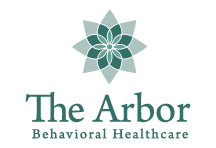Like any schedule V drug, gabapentin has a risk for misuse. Because it contains narcotics, the risk becomes greater. Physicians may prescribe it to treat serious health conditions, but with prolonged use, a person can become addicted. Like any substance use disorder, the first step in treating an addiction to gabapentin is seeking the guidance of a trusted professional. A doctor you know or a drug treatment center like The Arbor Behavioral Healthcare can talk you through options for a prescription drug addiction treatment program that works best for you and your unique needs. Don’t delay in getting the help you—or a loved one—need to overcome an addiction and get on the road to recovery.
What Is Gabapentin?
Gabapentin is a prescription drug that can lower the risk of seizures in conditions like epilepsy, manage pain, as well as to treat symptoms of other conditions such as post-traumatic stress disorder (PTSD) and alcohol withdrawal. There are also some types of anxiety and depression it may be prescribed for. Recognizable brand names include Neurontin and Gralise. Scientifically speaking, gabapentin directly affects the brain by elevating levels of gamma-aminobutyric acid (GABA). This causes a calming effect that reduces the risks of seizures and relieves pain.
Gabapentin Addiction Signs
If you’re concerned that you—or someone you care about—may have developed an addiction to gabapentin, here are some signs to look out for.
- More of the drug and more often are needed to achieve the desired effect
- The person sees multiple doctors to get multiple prescriptions for the drug—known as doctor-shopping
- Cravings for the drug are strong when not taking it
- The person has become reclusive and avoids responsibilities at work, home, or school
- Physical health issues develop, such as respiratory or cardiovascular problems
- Adverse symptoms arise when not using the drug—known as withdrawal
- A user develops a co-occurring mental health issue
It’s important to take immediate action if these symptoms are noticeable and the user continues to show signs of addiction.
Treating Gabapentin Addiction
Once addiction is apparent, it’s important to take the necessary steps to get help. As the drug user—or someone who supports them—these steps include:
- Coming to terms with and acknowledging that your drug use has become a problem
- Asking for help from those that you trust to get the help needed
- Weighing options on what addiction treatment center is the right fit for your needs
- Utilizing a variety of therapies to treat the addiction as well as any co-occurring mental health disorders
- Learning coping techniques to manage triggers to addiction in everyday life following treatment
- Establishing a strong support group of family, friends, and treatment peers
- Attending aftercare programming to ensure you don’t relapse
Recovery is for life, and during treatment, you will learn from others who are going through similar experiences. In turn, you will be able to help others by sharing your journey.
Enroll in Prescription Drug Addiction Treatment at The Arbor Behavioral Healthcare
While gabapentin can be an effective treatment for serious conditions like epilepsy, users also have to be very careful that they don’t develop a dependence on the drug. If you fear an addiction to gabapentin has developed, then it’s time to seek professional help as soon as possible.
At The Arbor, the treatment team will help to craft a unique and personal treatment plan for each client’s needs. Dual diagnosis treatment is also available for treating addiction and a mental health disorder alongside one another. A variety of therapeutic methods can be used, including traditional talk therapies, behavioral therapies, and experiential therapies. Call The Arbor today at 844.413.2690 or complete our online contact form to learn more about treatment programs.


